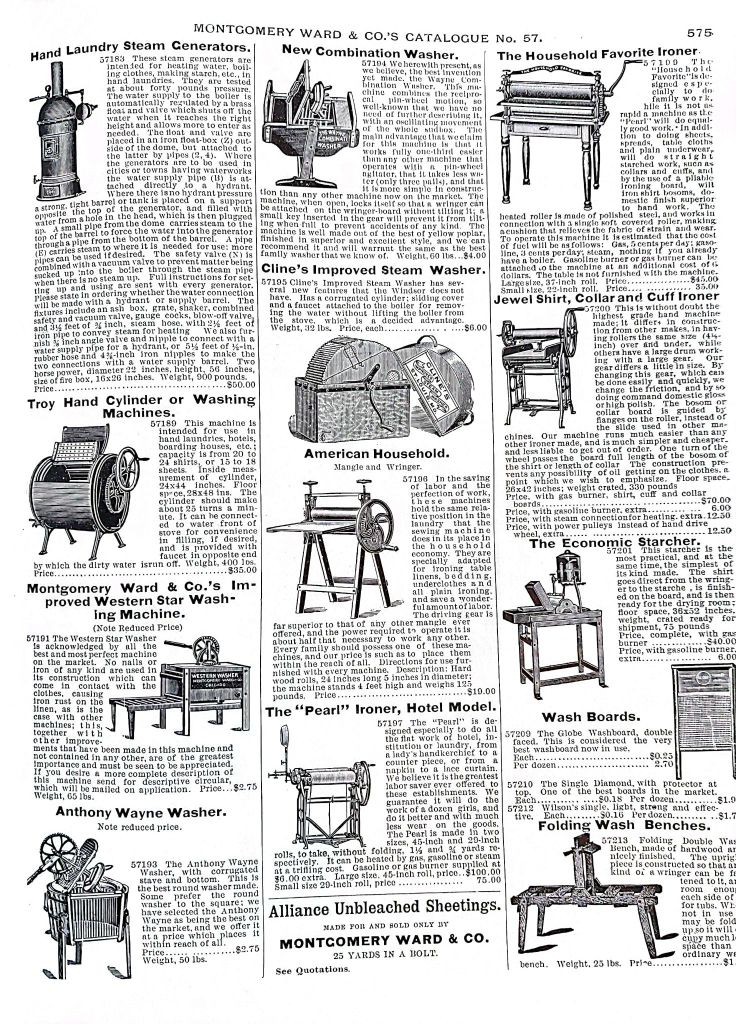Written by: Julia-Rose Miller, Honours Undergraduate, U of A Department of History, Classics and Religion
Laundry has always been among humanity’s greatest burdens. In the past, much like today, clothing had to be washed, bleached, starched, ironed and dried. However, historically, a household’s clothing was by far their most expensive and precious domestic possessions. This meant that the maintenance and laundering of clothing was even more crucial, even though households were likely not in possession of all of our modern cleaning chemicals and detergents. Laundry in Pakan was no different from other areas of Canada at this time as they had access to all the ‘modern amenities’ (hand cranked washing machines, wringers, mangles, irons, clothes lines, laundry tubs, washboards, wash boilers, ironing boards and clothes horses) via catalogues.

Studying domestic labour is at times rather complicated, because, like many other pieces of women’s work, there are few written records detailing laundry activities. To deal with the lack of Pakan-specific sources, my examination of laundry centered on images from Pakan in conjunction with other resources from different parts of Canada like the Eaton’s catalogues and household manuals. Images from Pakan established that residents were wearing western-style, cloth-based textiles, suggesting that they would likely also be using European laundering techniques developed for these articles of clothing. Annie B. Juniper’s Girls’ home manual of cookery, home management, home nursing and laundry provided a comprehensive explanation of numerous laundering techniques and materials popular at the turn of the century. This book, published in Victoria, B.C. in 1913, was given to school girls to instruct them on proper methods for home maintenance.
Read more


